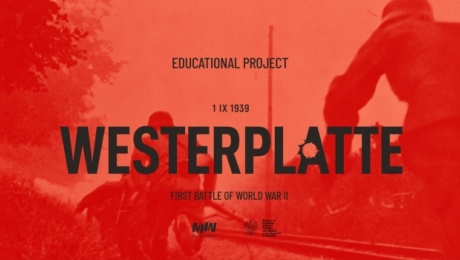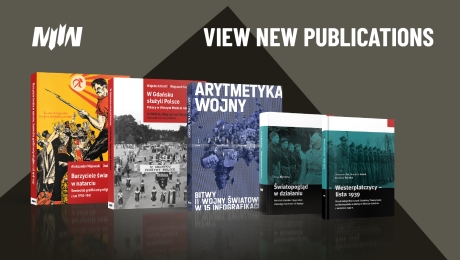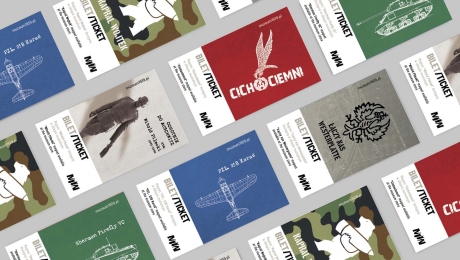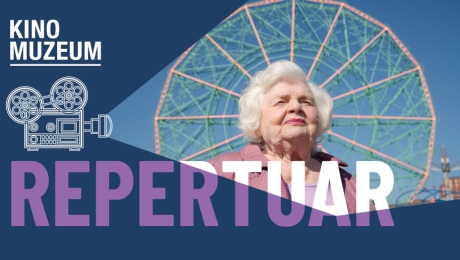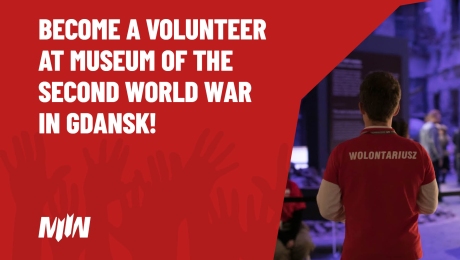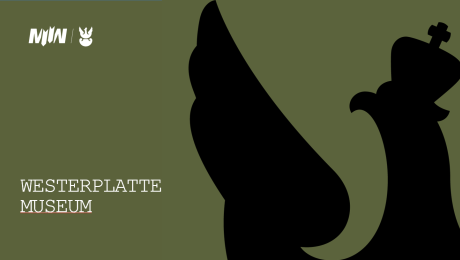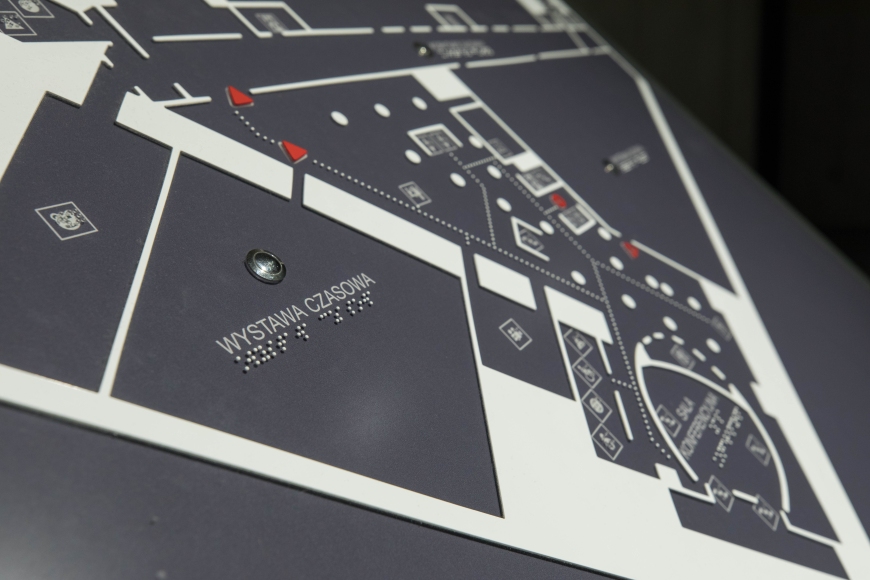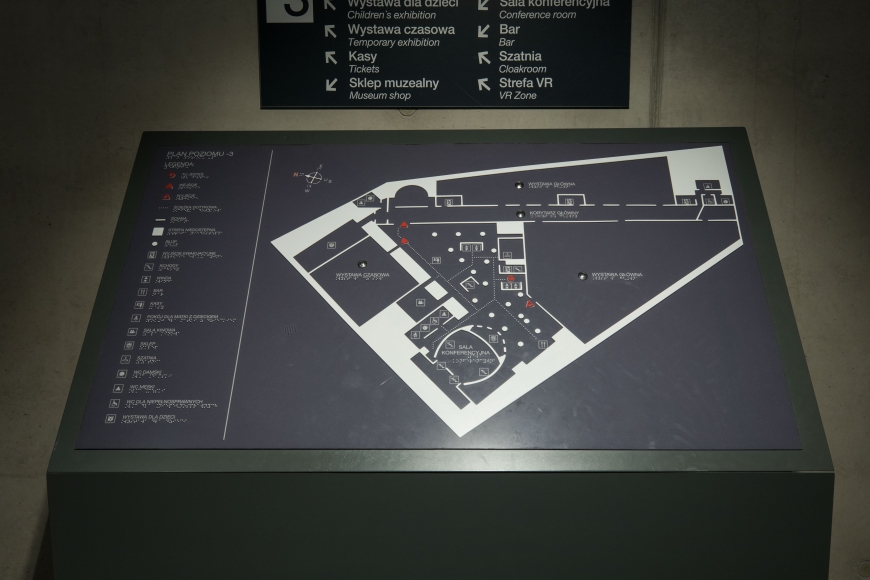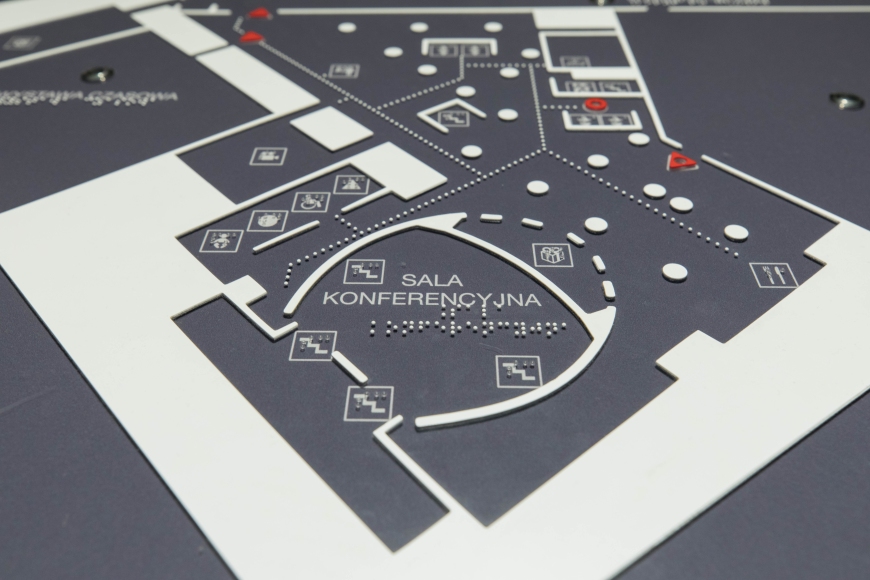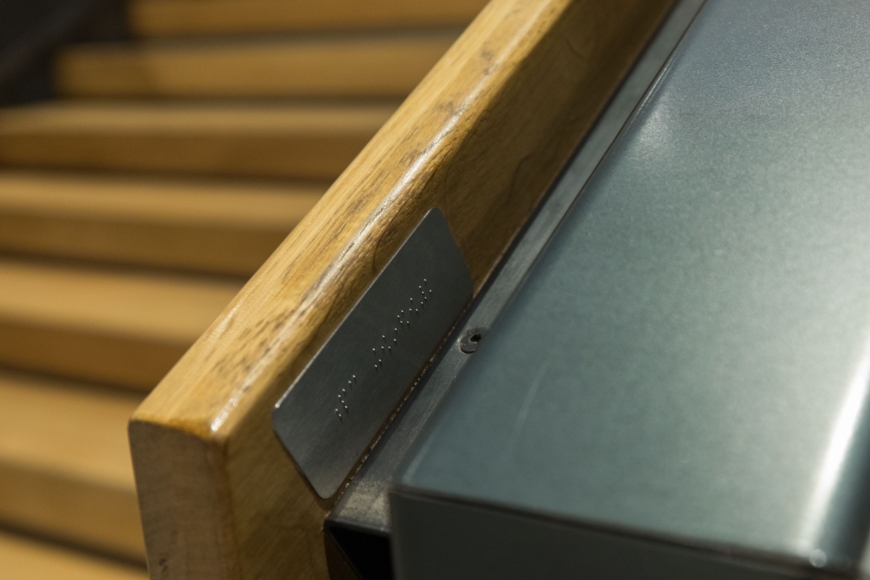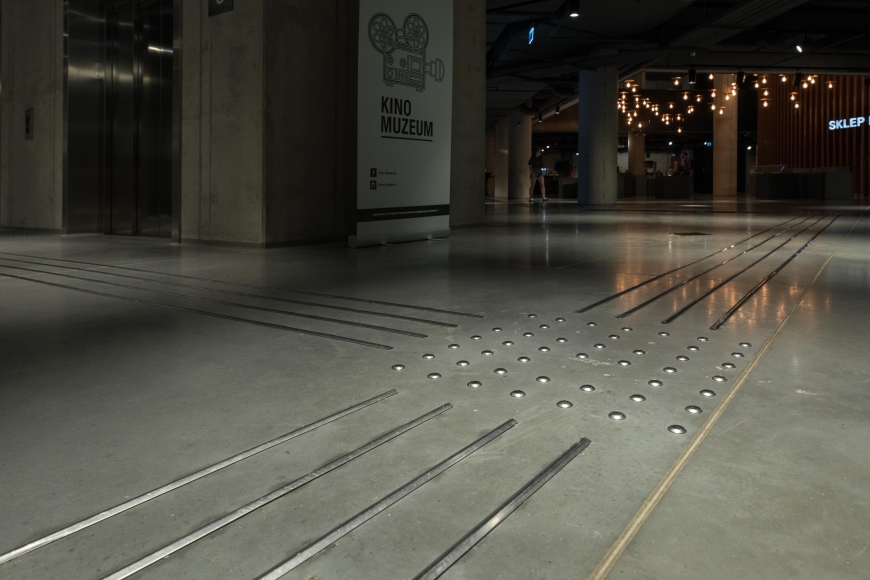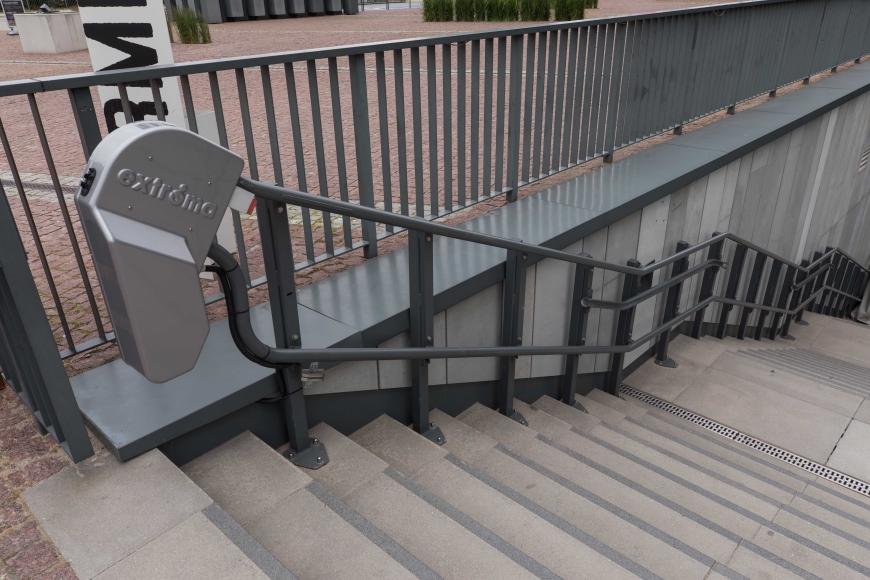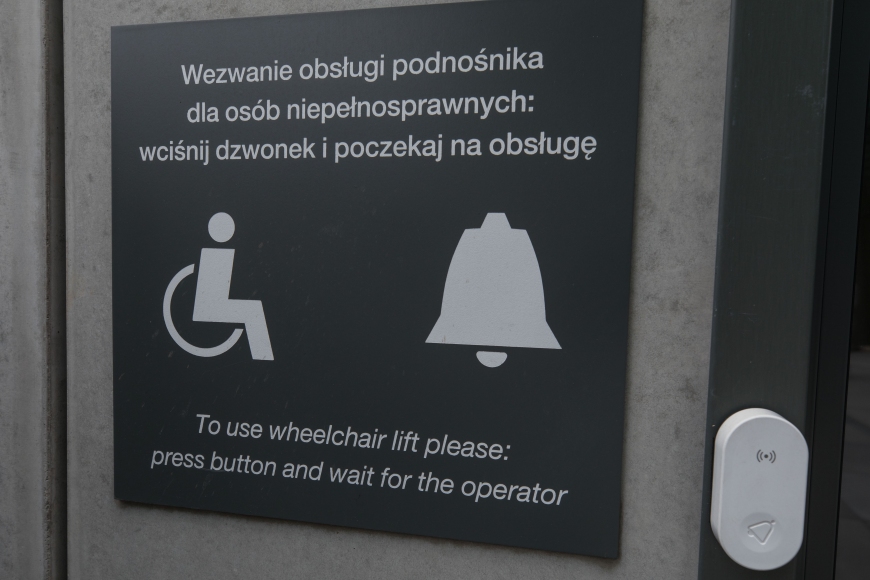For people with limited freedom of movement, there is a ramp leading directly to the entrance, as well as elevators that allow you to move between the levels. The passageways at all exhibitions are wide, allowing for trouble-free movement in a wheelchair.
Declaration of digital accessibility
The Museum of the Second World War in Gdańsk undertakes to ensure the accessibility of its website in accordance with the Act of April 4th, 2019 on the digital accessibility of websites and mobile applications belonging to public entities and institutions.
Date of website publication: 01.01.2009
Date of the last significant update: 03.12.2021
Status in terms of compliance with the law:
The website of the Museum of the Second World War in Gdańsk is partially compliant with the above-mentioned Act on digital accessibility of websites and mobile applications of public institutions and entities due to the non-compliances listed below.
Unavailable content:
The website lacks alternative descriptions and titles for some photographs and graphics, there are no audio descriptions or text alternatives for some videos, and in addition some of the published forms lack description labels.
Update to the declaration of accessibility made on 08.12.2021 to the website of the Museum of the Second World War in Gdańsk:
- Addition of a site map.
- Graphics with informative functions (permanently embedded graphics on site pages), in addition to news graphics, now include descriptive alt attributes.
- The semantic page layouts work correctly. The layouts of the page headers meet the accessibility criteria. Bookmarks are properly placed and labeled. Recurring navigational elements are appropriately described. Breadcrumbs have been adapted to accessibility requirements.
- The site now meets the accessibility contrast requirements.
- The drop-down menu items can be accessed using a keyboard.
- Ability to bypass blocks - while browsing a page with a keyboard, easy access from the start to the main menu, the main parts and blocks of the page and to a search engine.
- On website auto-scrolling sliders, the pause mechanism and the start of the auto-scroll are now working.
- Links on the website are properly described using hidden descriptions (class sr-only), so that people using screen readers are informed where they link to.
- Visible focus - elements focused on during keyboard navigation (Tab key) are clearly visible on both dark (eg footers) and light backgrounds.
Feedback and Contact Details:
Contact person: Bogumiła Brant
E-mail: dostepnosc@muzeum1939.pl
Phone: +48 58 570 260 009
Everyone has the right:
- to make a request to ensure digital accessibility of a website, mobile application or any elements thereon.
- to also request information be made available using alternative means of access, for example access to any digitally unavailable documents, describing contents of videos without audio descriptions, etc.
Any request should include:
- the data of the person submitting the request.
- an indication of which website or mobile application is being referred to and the method of contact with it.
- Specification by the person reporting or requesting a need to receive information by alternative methods of access, of the most convenient way for this information to be presented or accessed.
The public entity or institution should fulfill the request immediately, not later than within 7 days from the date of the request. If it is not possible to meet this deadline, the public entity shall immediately inform the person making the request of when it will be possible to fulfill the request. The deadline may not be longer than 2 months from the date of submitting the request. If digital accessibility is not possible, the public institution or entity should propose an alternative way of accessing the information.
In the event that the public institution or entity refuses to comply with a request to ensure the availability or an alternative method of access to information, the person submitting the request may submit a complaint regarding the provision of digital accessibility of the website, mobile application or website element or mobile application. After exhausting the above-mentioned procedures, an application to the Ombudsman can also be submitted.
Architectural Accessibility Report
The Museum building covers an area of approx. 23,000 sq. m, and the main exhibition is approx. 5,000 sq. m. The building has nine floors, three of which are below ground level. The levels are occupied by the sections described below:
Level 5 Inaccessible area (offices)
Level 4 Restaurant
Level 3 Inaccessible area (offices)
Level 2 Library
Level 1 Inaccessible area (offices)
Level 0 Archaeological exhibition
Level –1 Information desk, Entrance hall, Exit/ Parking G1
Level –2 Conference hall/ Parking G2
Level –3 Main exhibition, Children’s exhibition, Temporary exhibition, Ticket office, Museum shop, Cinema, Conference hall, Bistro, Cloakroom.
1. Entrance area
Parking
- The parking spaces are located in the underground two-storey car park. There are 6 spaces designated for people with disabilities: 4 spaces on level G1 and 2 spaces on level G2.
- The parking spaces are painted blue and properly marked.
- There is a corridor approximately 10 metres long leading from the parking area to the building entrance.
- Level –1 from the car park is accessed either by the elevator or the stairs (the staircase is located by the ticket machine).
- There is a parking fee. Once paid, the parking ticket needs to be placed behind the windscreen.
- Due to its low height the ticket machine is inaccessible for wheelchair users and persons of short stature. There is no other possibility to pay the parking fee.
Main entrance to the building (Plac W. Bartoszewskiego [Bartoszewskiego square], from Sukiennicza Street)
- Located on level –1, the main museum entrance is accessed from level 0 by 28 steps. There are 2 landings between the flights of stairs. There are no anti-slip or contrast strips.
- There is an outdoor elevator located 10 metres from the stairs.
Second entrance – for people with baby strollers (Plac W. Bartoszewskiego)
- The second entrance is located approx. 100 metres from the main entrance. It is not clearly marked. You need to cross the Bartoszewskiego square and head towards the Motława river. There is a site plan by the footbridge.
- The sloping footbridge of approx. 15 degrees and length of approx. 110 metres leads to the second entrance to the building. The footbridge has no resting places or lower handrails. The higher handrails are only on one side (right, moving towards the entrance). There is a door at the end, leading to level –1. Much force is required to open it. On the wall next to the entrance is the intercom. It is located high up, the buttons are not contrasting. There is no camera.
Entrance hall
- In the entrance hall located on level –1, there is an information desk. The counter is not lowered.
- By the information desk, there is a touch layout plan. Additional layout plans are located by the elevators on levels –3, –2, –1, 0. There are floor signs on all levels leading to the elevators, on level – 1 to the information desk, and on level –3 to the ticket office and to the main exhibition. A wheelchair (2 pieces) or a carry-on touch plan of the museum can be borrowed at the information desk.
- All levels are accessible by the elevator or the stairs.
- The elevator lacks clear voice announcements – they are very quiet.
- The entrance hall is well-lit.
- All corridors are accessible: wide, no vertical barriers.
Staircase
- The internal staircase has wooden steps. On both sides, there is a handrail along the flight. The edges of the stairs are not marked, there are Braille signs. The handrail is discontinuous – the descent from –1 to –3 level is interrupted by the passage to the conference halls. The edges of the steps are not marked.
Elevators
- There are 4 elevators in the building.
- Two elevators, on the left hand side of the entrance, lead to the exhibition, the cinema, the conference hall and the offices, library and restaurant. Opposite the entrance is a touch floor plan. The elevator buttons are convex and marked in Braille. The plan is equipped with voice announcements.
- Two more elevators, opposite the main entrance, lead to the exhibitions, the cinema and the conference halls. The doors open on both sides. The voice announcements are very quiet. The buttons are convex and marked in Braille.
Bathroom
- The building has toilets accessible for people with disabilities.
- 2 bathrooms are on level –3. One toilet is in front of the entrance to the main exhibition, the other toilet at the main exhibition. The toilets are accessible for people with disabilities. Doors open outwards and easily remain in the open position.
- 1 bathroom is on level –2. The bathroom is accessible for people with disabilities. Doors open outwards and easily remain in the open position.
- In the bathrooms there is an emergency cord. Handrails are installed on the walls at the washbasin and at the toilet bowl.
Assistance dog
- Assistance or guide dogs are welcome. An assistance dog requires a certificate and a vaccination certificate to enter.
- Guide dogs are not required to wear muzzles or be on a lead.
- Water for dogs is provided.
Ticket office and shop
- The counters are high, making it difficult to serve wheelchair users and persons of short stature.
- At checkout points there is no service for people who only use sign language.
2. Main exhibition and temporary exhibitions
- Permanent and temporary exhibitions are located on one level. There are no vertical barriers between them.
- At the main exhibition the lighting varies. Between some rooms the contrast can be very high (transition from darkness to brightness and vice versa).
- Most corridors and passages are wide. There are narrowings in the “Road to War” and “September” sections that may cause difficulties for wheelchair users.
- There are no facilities for people with visual, hearing, or intellectual disabilities at the exhibition.
- There is no sign language interpreter on site.
3. Offices
- The entrance is located at Stara Stocznia Street.
- There are no vertical or horizontal barriers. The space is not marked with Braille signs.
- There is no sign language interpreter on site.
4. Museum Hotel
- The entrance is located at Stara Stocznia Street. The door is always locked. The staff answers the intercom.
- There are no facilities for visual and hearing impairment persons at the reception desk.
- At the hotel one of the rooms is wheelchair accessible. The bathroom is adapted for people with mobility impairments.
- The shared spaces (kitchen, terrace) are on one level.
- Some rooms/suites are bunked. The steps inside the rooms are not marked.
- The space is not marked with Braille signs.
5. Library
- The library is located on level +2.
- A security officer guides visitors to the library. The library is located in a section not open to the general public.
- The library is accessible by the elevator located just by the main entrance on level –1.
- Magnifying glasses and magnifying films are available.
- The space is not marked with Braille signs.
6. Cinema
- The cinema hall is located on level –3.
- Wheelchair users can take their seats at the front of the hall.
- The cinema hall is not equipped with an induction loop.
7. Conference hall
- The conference hall is located on level –3, with entrance also possible from level –2.
- The hall is not equipped with an induction loop.
- The auditorium is accessible for wheelchair users, and it is possible to take a seat at the front of the hall.
- A staircase leads up to the stage. Wheelchair users can get to it by a side passage provided by staff.






